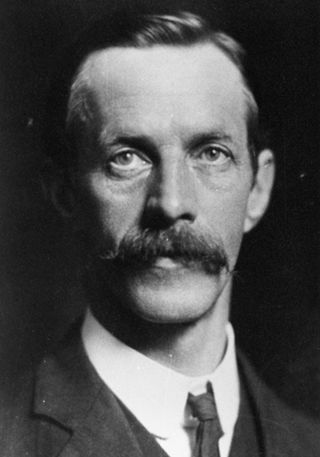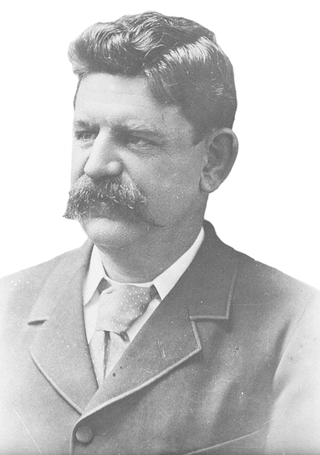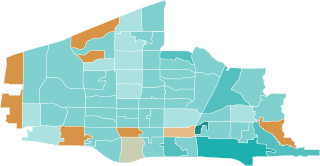The Division of Grey is an Australian electoral division in South Australia. The division was one of the seven established when the former Division of South Australia was redistributed on 2 October 1903 and is named for Sir George Grey, who was Governor of South Australia from 1841 to 1845.

The 1908 New Zealand general election was held on Tuesday, 17 and 24 November and 1 December in the general electorates, and on Wednesday, 2 December in the Māori electorates to elect a total of 80 MPs to the 17th session of the New Zealand Parliament. A total number of 537,003 (79.8%) voters turned out to vote.

The 1911 New Zealand general election was held on Thursday, 7 and 14 December in the general electorates, and on Tuesday, 19 December in the Māori electorates to elect a total of 80 MPs to the 18th session of the New Zealand Parliament. A total number of 590,042 (83.5%) voters turned out to vote. In two seats there was only one candidate.

The 1912–13 United States Senate elections were held on various dates in various states. They were the last U.S. Senate elections before the ratification of the Seventeenth Amendment in 1913, establishing direct elections for all Senate seats. Senators had been primarily chosen by state legislatures. Senators were elected over a wide range of time throughout 1912 and 1913, and a seat may have been filled months late or remained vacant due to legislative deadlock. Some states elected their senators directly even before passage of Seventeenth Amendment. Oregon pioneered direct election and experimented with different measures over several years until it succeeded in 1907. Soon after, Nebraska followed suit and laid the foundation for other states to adopt measures reflecting the people's will. By 1912, as many as 29 states elected senators either as nominees of their party's primary or in conjunction with a general election.
The Lyttelton by-election of 1913 was a by-election during the 18th New Zealand Parliament. As no candidate won an absolute majority on the first ballot on 9 December, a second round was held on 16 December. The seat had become vacant due to the death of sitting MP George Laurenson. Five candidates stood. It was the last by-election in New Zealand to use the Two-round voting system to elect a member.
Thames is a former New Zealand electorate, in the Thames-Coromandel District. It existed from 1871 to 1946.
Members of the New South Wales Legislative Assembly who served in the 22nd parliament of New South Wales held their seats from 1910 to 1913. They were elected at the 1910 state election on 14 October 1910. The Speakers were John Cann, Henry Willis and Henry Morton 22 July 1913 – 22 December 1913.

The 1848–49 United States Senate elections were held on various dates in various states. As these U.S. Senate elections were prior to the ratification of the Seventeenth Amendment in 1913, senators were chosen by state legislatures. Senators were elected over a wide range of time throughout 1848 and 1849, and a seat may have been filled months late or remained vacant due to legislative deadlock. In these elections, terms were up for the senators in Class 3.

The 1816–17 United States Senate elections were held on various dates in various states. As these U.S. Senate elections were prior to the ratification of the Seventeenth Amendment in 1913, senators were chosen by state legislatures. Senators were elected over a wide range of time throughout 1816 and 1817, and a seat may have been filled months late or remained vacant due to legislative deadlock. In these elections, terms were up for the senators in Class 2.

Elections to Lewisham London Borough Council were held on 4 May 2006. The whole council was up for election for the first time since the 2002 election.

The 18th New Zealand Parliament was a term of the New Zealand Parliament. It was elected at the 1911 general election in December of that year.

The Second Ballot Act 1908 was an Act of the New Zealand Parliament for regulating elections to the New Zealand House of Representatives. The Act implemented the two-round voting system to ensure that Members of Parliament were elected by a majority, not a simple plurality like the first-past-the-post voting system that had been used since the 1853 New Zealand general election.

The 1913 New South Wales state election was held on 6 December 1913. This election was for all of the 90 seats in the 23rd New South Wales Legislative Assembly and it was conducted in single-member constituencies with a second ballot if a majority was not achieved on the first. The 22nd parliament of New South Wales was dissolved on 6 November 1913 by the Governor, Sir Gerald Strickland, on the advice of the Premier William Holman.

The 1910 New South Wales state election was held on 14 October 1910 for all of the 90 seats in the 22nd New South Wales Legislative Assembly and it was conducted in single-member constituencies with a second ballot if a majority was not achieved on the first. Both adult males and females were entitled to vote, but not Indigenous people. The 21st parliament of New South Wales was dissolved on 14 September 1910 by the Governor, Lord Chelmsford, on the advice of the Premier Charles Wade.
The Grey Lynn by-election 1963 was a by-election held in the Grey Lynn electorate in Auckland during the term of the 33rd New Zealand Parliament, on 18 May 1963.
A general election was held in the U.S. state of Minnesota on November 6, 2018. All of Minnesota's executive officers were up for election as well as all the seats in the Minnesota House of Representatives, several judicial seats, two United States Senate seats, Minnesota's eight seats in the United States House of Representatives, and several seats for local offices. Special elections were also held for a Minnesota Senate seat and Minnesota's Class 2 U.S. Senate seat. A primary election to nominate Republican and Democratic–Farmer–Labor (DFL) candidates and several judicial and local primary elections were held on August 14, 2018.

Two United States Senate elections were held in Illinois on March 26, 1913. The two elections were interconnected through a compromise made to elect a Democrat in the regular election and a Republican in the special election.

The Cook County, Illinois, general election was held on November 6, 2018.

Elections were held in Illinois on Tuesday, November 3, 1964.

The 2021 Plano municipal elections took place on May 1, 2021. In addition to the mayoral election, seats were contested for Places 2, 4, and 8, as well as a special election for Place 7. No candidate received a majority of the total vote in Places 2 and 7, so the two top vote-earners advanced to a runoff election. This election took place on June 5, 2021. Due to term limits, incumbent mayor Harry LaRosiliere was ineligible to run for a third term.













